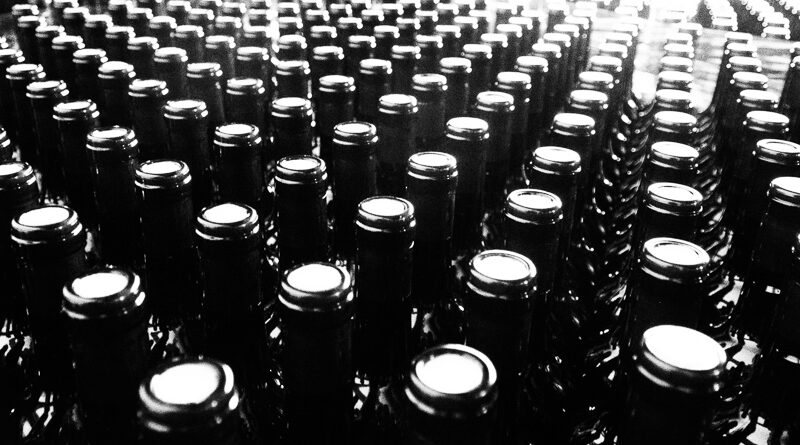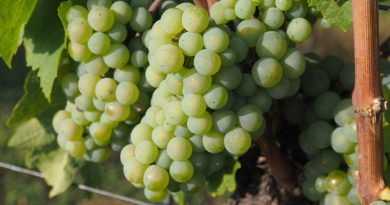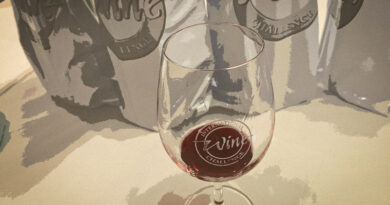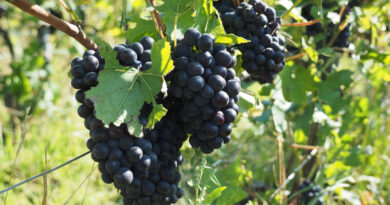Glass bottles for wine: exploring the science
Glass is remarkable, yet we tend to take it for granted. Wine wouldn’t be what it is today, were it not for the physical properties of glass bottles. They are inert, stable and able to keep wine in good condition for 100 years or more.
Back in the day, all wine that needed to move to market would have been transported in bulk: either in amphorae in the ancient world, or in skins, or in barrels, once these became widely adopted. Then, once it got to market, the wine would need to be consumed fairly young – the young wine was fresh and had desirable flavours, whereas most older wines would have deteriorated in contact with the air. The first glass bottles would have been used to transport wine from the container to the table, and then would have been re-used.
At some stage, someone had the bright idea of sticking tree bark in the neck of a bottle: cork became widely used as a stopper. Then, someone else would have realised that if a cork were inserted more fully into the neck, it created a seal that excluded oxygen and allowed the wine to develop in the bottle. The cork/glass bottle combination created fine wine as we know it today: bottles that can be cellared, in some cases for many years.
Technically glass has a liquid (amorphous) structure, lacking the characteristic crystalline structure of a solid. For all intents and purposes, we can think of it as a solid, though: the notion that the uneven thickness of hundreds-of-years old glass panes is due to the slow flow of the liquid glass is an urban myth. Glass does not flow over time. During the assembly of stained glass windows, craftsmen placed the thicker part of the glass at the bottom, as back then glass had uneven glass thickness due to production process.
It’s made by melting silica (sand) together with other ingredients, and these are crucial in determining the properties of the glass. Most glass bottles and jars are made from soda-lime glass. If you were to make a bottle from scratch, the typical ingredients would be the following.
- 59% Sand
- 17% Soda Ash
- 11% Limestone
- 5% Dolomite
- 4% Calumite
- 4% other
There are a range of types of glass in addition to soda-lime glass. Borosilicate glass is Pyrex, and can be used for cooking, because it withstands changes in temperature much better. Lead was used for many years in crystal drinking glass for its clarity and refractive index Glass lasers can be doped with various elements, such as tellurite, to enhance performance.
I asked Jenni Richards, Federation Manager at British Glass, why glass is such an important material. ‘Glass respects its contents,’ says Richards. ‘It doesn’t add or take away anything from the taste or the quality. Glass is made from natural materials which makes it virtually inert.’
Wine is high in acidity and has alcohol – a solvent in it – so it can be challenging to find a packaging material that doesn’t react in some way with it. It is also extremely sensitive to oxygen, so any container used to store it has to be impervious to oxygen. This can be quite a challenge, but this is one that glass meets. Richards adds, ‘it is also part of the experience: shall we open a bottle of wine?’
With wine there is a legal definition of its nature, and this is to do with the wine constitution itself: it is made purely from grapes, with only a few processing aids and preservatives permitted. But when most people think of wine, they think of the experience of wine: the ‘object’ of wine. It is an alcoholic liquid that can be red, white or pink, that comes in a bottle: the packaging is very tightly bound to the image of wine. This is one of the reasons why screwcaps – a technically consistent and flaw-free closure – have struggled to oust the less reliable cork in many markets: people associate wine with bottles sealed with a cork. Many enjoy the process of uncorking a bottle.
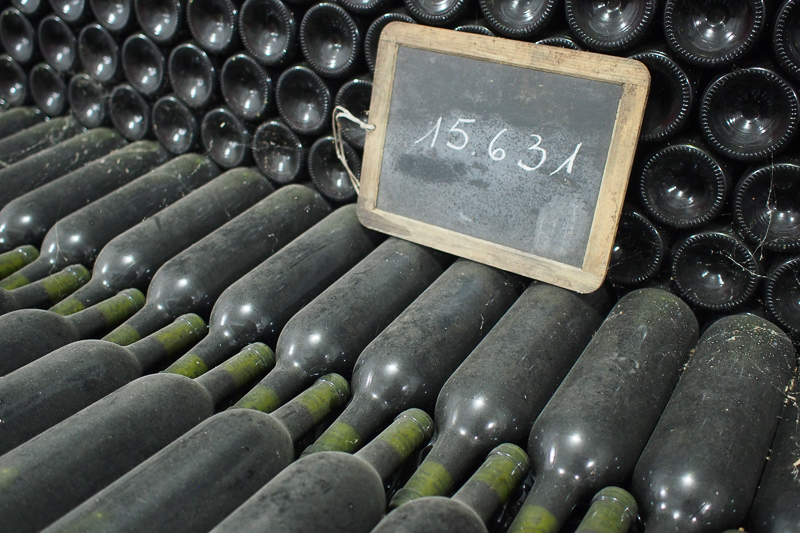
But one of the main appeals of glass, aside from its unique properties, is its environmental credentials. ‘The great thing about glass is that it is 100% recyclable, an infinite number of times, without loss of quality,’ says Richards. ‘We have been recycling glass in the UK for 40 years. The original recycling banks were put in by the glass sector because we wanted this waste glass so much. So for bottles made in the UK, some of the glass they are produced from has been going round and round the system for 40 years.’ The first bottle banks appeared in 1977.
Does the colour of glass matter for recycling? ‘It does,’ says Richards. ‘There are certain tolerances. Green glass will take a good mixture of anything. It has to be mostly green, though. But clear glass has to have only clear glass in it.’
Is there an excess inventory of green glass in the UK? ‘Yes, we import a lot of green glass and we manufacture more flint (clear) glass,’ says Richards. ‘We make a fair amount of green glass, but there is an imbalance. The excess green glass that is collected in the UK is exported to glass manufacturers elsewhere, who have the reverse imbalance.’
With the increased amount of wine that is UK bottled after bulk shipping, this could alter that demand a bit. ‘Also, if the industry understands the limitations of recycling, and accept a slightly less high-quality colour in clear glass, this would make a difference,’ says Richards. ‘Studies show that people are generally OK about having slightly tinged (green) jars, as long as it is not mayonnaise – not very appetising.’
The carbon footprint of recycling is an issue. ‘There has been a 50% cut in the energy requirement over the last 40 years,’ explains Richards. ‘But it is an ongoing journey. The glass sector signed up to the UK Government’s 2012 roadmap for carbon reduction, and participated in an action plan. We are now drawing up a net zero plan for the UK glass sector. We are involved with an organization called Glass Futures, looking at decarbonization options. There are some issues in switching fuels, but we can do it.’
When it comes to melting glass, it is not all about the temperature; the luminosity of the flame is also very important. ‘It is how the energy is transferred,’ says Richards. ‘At the moment glass is manufactured in gas-fired furnaces. The glass is in the bottom like a bath, and the flame comes over the top. The heat is transferred into that liquid bath of glass by infra-red radiation. It is in there for a while for everything to mix properly. If you look at other fuels such as hydrogen, then you are interested in how the flame transfers that energy into the glass as well as the heat. With electricity, electrodes are put in the bottom: electric melting is a possibility, but there are issues scaling up. Partial electric melting in combination with other fuels is growing. Apart from the technology, the other main barrier is the cost. It wouldn’t make any sense right now, but when the grid decarbonises (it will be carbon negative by the early 2030s) it might.’
Is re-use of bottles and option? Milk bottles are a great example of re-use of glass bottles, but this works because the bottles are interchangeable and it is local. ‘What is very difficult is when the bottle is filled somewhere different to where it is consumed,’ says Richards. The bottle would have to go back to the correct bottling facility. ‘The material is suitable; it’s just the logistics.’ It would work in countries with a standard bottle. Also, a single trip bottle isn’t the same as a reusable bottle. The reusable bottle will be more robust and it is also designed with the sort of sterilization needed in mind. But glass is a perfect material for re-use. ‘Brand owners and retailers are the real power here: as a sector we manufacture to the needs of our customers.’
Glass bottles are so ubiquitous that we tend to just take glass, with its remarkable wine preserving properties, for granted. But without it, we wouldn’t have wine as we know it today.

